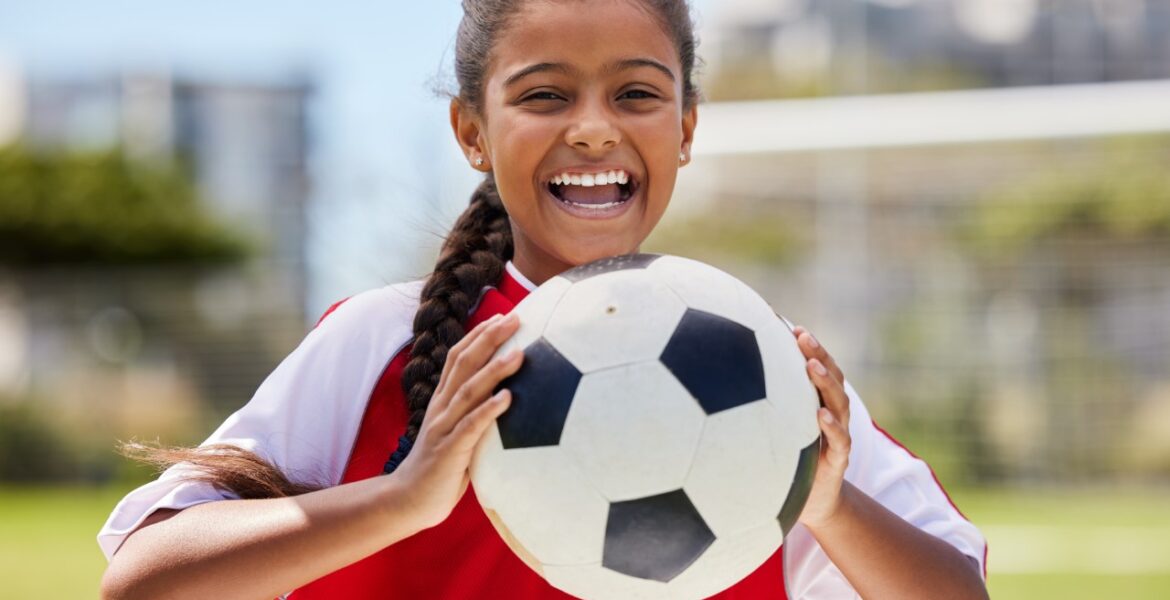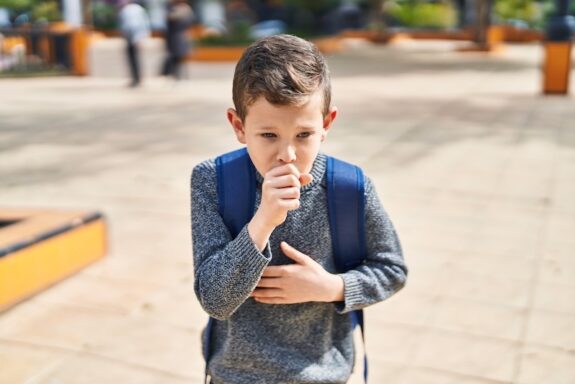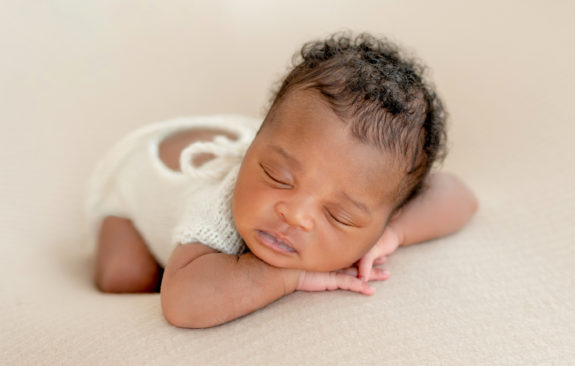
The most common rashes we see in children playing sports are heat rash, contact dermatitis, Athlete’s foot, impetigo and eczema. Let’s talk about each of these and what we can do to prevent and treat them!
Heat rash:
- Caused by excessive sweating, which can clog sweat glands, resulting in a rash that appears as small red bumps on the skin.
- Prevention: Wear the right clothes! Avoid heavy clothing or tight material. Make sure they drink plenty of water and take breaks.
- Treatment: If your child experiences heat rash, move them to a cool area and put a cold compress on the rash. The goal is to allow the skin to breathe and cool down. Over-the-counter medications such as hydrocortisone can help with any swelling or itching
- Seek Medical Treatment If: If the heat rash is severe or persists for more than a few days, it’s best to seek medical attention. The doctor may prescribe a stronger topical cream or recommend other treatment options.
Contact dermatitis:
- Caused by contact with irritants, such as synthetic fabrics or chemicals in sports equipment.
- Prevention: Wear loose-fitting clothing (preferably moisture-wicking) when playing sports. Shower and change clothes after playing sports and consider using fragrance-free soaps.
- Treatment: Apply a cool wet cloth over the rash, and then an anti-itch cream such as hydrocortisone. Protect the skin by not scratching. An oral antihistamine such as Benadryl can also be taken.
- Seek Medical Treatment If: If the rash is too itchy and your child cannot sleep or is increasingly uncomfortable. Your doctor may be able to prescribe a topical steroid to help.
Athlete’s foot:
- A fungal infection that causes a scaly rash on the feet, often from walking barefoot in communal areas.
- Prevention: Keep your feet dry and wear shoes when in public areas (locker rooms, public pools, etc). Wear sandals when possible and change your shoes after working out.
- Treatment: There are over-the-counter medications that can treat athlete’s foot such as Lotrimin. Changing socks and shoes frequently and washing your feet frequently during the day is also recommended. There is no need to worry about throwing out shoes unless they are frequently worn without socks.
- Seek Medical Treatment If: If the rash doesn’t show signs of improvement within two weeks you should take your child to the doctor. They will be able to prescribe stronger medications and make sure there are no other underlying issues.
Eczema:
- A chronic skin condition that can be triggered by exercise, heat, or sweating, resulting in red, itchy patches of skin. In young children, this typically appears on elbow creases and the back of the knees.
- Prevention: Experts say they don’t know if there is a sure way to prevent eczema but there are ways to try to relieve symptoms. If you live in dry or cold climates, good skin care can help. This includes moisturizers or ointments.
- Treatment: For children with eczema, it is important to keep the skin hydrated. Apply moisturizers immediately after bathing. Avoid rubbing their skin dry after a bath, but rather “pat” the skin gently.
- Seek Medical Attention If: Similar to contact dermatitis, you should seek medical care if the eczema is impeding your child’s day-to-day life. A provider may be able to provide allergy testing and prescribe stronger medications to help.
Impetigo:
- Usually begins as a skin injury that becomes infected. This can be a cut, scrape, eczema, insect bite, or poison ivy. It causes red pimples, blisters, and an oozing rash on the face, hands, legs, and diaper area.
- Prevention: Don’t share personal items. Surfaces should be disinfected. Personal hygiene of request washing of body and hair can help prevent impetigo. Also wash towels, clothes, etc.
- Treatment: Impetigo needs to be diagnosed by a medical provider so a prescription antibiotic cream can be prescribed. Depending on the size of the rash, an oral antibiotic may also be prescribed. Cover the infected areas loosely to allow the blisters time to heal.
- For more information on impetigo, click here.
Little Spurs Pediatric Urgent Care opened in 2006 in San Antonio, Texas. With multiple locations in San Antonio and Dallas, they are open seven days a week with extended evening hours and see walk-in patients or through an online check-in system. They accept most commercial insurance and Medicaid plans.
Keywords: athlete's foot • contact dermatitis • dermatitis • heat rash • impetigo • rash • rashes • skin rash



